
SimCity, also known as Micropolis or SimCity Classic, is a city-building simulation video game developed by Will Wright, and released for several platforms from 1989 to 1991. SimCity features two-dimensional graphics and an overhead perspective. The game's objective is to create a city, develop residential and industrial areas, build infrastructure, and collect taxes for further city development. Importance is placed on increasing the population's standard of living, maintaining a balance between the different sectors, and monitoring the region's environmental situations to prevent the settlement from declining and going bankrupt.
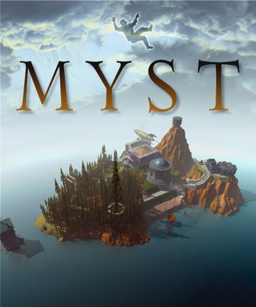
Myst is a graphic adventure designed by the Miller brothers, Robyn and Rand. It was developed by Cyan, Inc., published by Broderbund, and initially released in 1993 for the Macintosh. In the game, the player travels via a special book to a mysterious island called Myst. From there, solving puzzles allows the player to travel to other worlds ("Ages"), which reveal the backstory of the game's characters and help the player make the choice of whom to aid. The player interacts with objects and walks to different locations by clicking on pre-rendered imagery.

Master of Orion is a turn-based, 4X science fiction strategy game in which the player leads one of ten races to dominate the galaxy through a combination of diplomacy and conquest while developing technology, exploring and colonizing star systems.
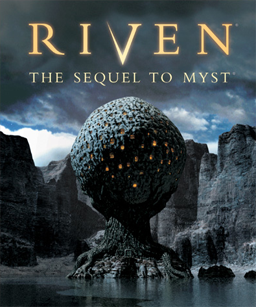
Riven: The Sequel to Myst is a puzzle adventure video game, the second in the Myst series of games. Developed by Cyan Worlds, it was initially published by Red Orb Entertainment, a division of Broderbund. Riven was distributed on five compact discs and released for Mac and Windows personal computers on October 31, 1997, in North America; it was later released on a single DVD-ROM in 1998. Riven was also ported to several other platforms. The story of Riven is set after the events of Myst. Having been rescued from the efforts of his sons, Atrus enlists the help of the player character to free his wife from his power-hungry father, Gehn. Riven takes place almost entirely on the Age of Riven, a world slowly falling apart due to Gehn's destructive rule.
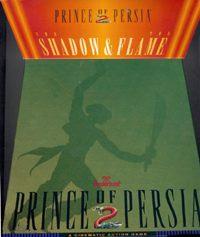
Prince of Persia 2: The Shadow and the Flame is a platform game released by Broderbund in 1993 for the MS-DOS, and later ported to Macintosh, Super NES, and FM Towns. It is the second installment in the Prince of Persia series, and a direct sequel to 1989's Prince of Persia. Both games were designed by Jordan Mechner, but unlike the original, he did not program the sequel himself. In the game, players control the Prince as he attempts to return to Persia and defeat the evil wizard Jaffar once and for all, who has assumed his appearance, seized the throne, and put his love interest, the Princess, under a death spell.

James Bond 007: Nightfire is a 2002 first-person shooter video game published by Electronic Arts for the GameCube, PlayStation 2, Xbox and Microsoft Windows, with additional versions released for the Game Boy Advance in 2003, and the Mac OS X in 2004. The computer versions feature modifications to the storyline, different missions and the removal of driving sections used in home console versions.

Crash Team Racing is a 1999 kart racing video game developed by Naughty Dog and published by Sony Computer Entertainment for the PlayStation. It is the fourth installment in the Crash Bandicoot series. The game's story focuses on the efforts of Crash Bandicoot, Doctor Neo Cortex, and other ragtag team of characters in the Crash Bandicoot series, who must race against the egomaniacal Nitros Oxide to save the Earth from destruction. In the game, players can take control of one of fifteen Crash Bandicoot series characters, though only eight are available at first. During the races, offensive and speed boosting power-ups can be used to gain an advantage.

Ratchet & Clank is a platform video game developed by Insomniac Games and published by Sony Computer Entertainment for the PlayStation 2 in 2002. It is the first game in the video game series of the same name and precedes Going Commando.

Living Books is a series of interactive read-along adventures aimed at children aged 3–9. Created by Mark Schlichting, the series was mostly developed by Living Books for CD-ROM and published by Broderbund for Mac OS and Microsoft Windows. Two decades after the original release, the series was re-released by Wanderful Interactive Storybook for iOS and Android.

The video game series based on the game show Family Feud began with ShareData's 1987 release on the Apple II and Commodore 64 consoles. In 1990 GameTek released a version on the NES. GameTek later released four more Feud games for the Super NES, Sega Genesis, 3DO, and PC between 1993 and 1995. Hasbro Interactive, Global Star, and Ubisoft have also released versions starting in 2000.
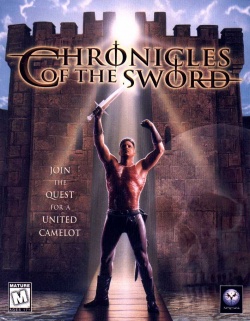
Chronicles of the Sword is an adventure game developed by Synthetic Dimensions and released by Psygnosis in 1996 for MS-DOS and Sony PlayStation platforms. The game, originally titled as King Arthur: The Quest of The Fair Unknown, is based on Arthurian legends and uses a point-and-click interface. Chronicles of the Sword tells the story of the young knight Gawain on a quest to save Camelot from the scheming witch queen Morgana. It has received largely negative reviews.

The Playroom is a video game first created in 1989 for DOS, Apple II and Macintosh computers. The game was compatible with the TouchWindow utility. It was ported to the Amiga and FM Towns computers in 1992 and 1994 respectively and then remade for Microsoft Windows and Macintosh in 1995. It was designed for ages 3 to 6 manufactured by Broderbund. A follow up game titled The Treehouse came in 1991 as well as a sequel to this game, called The Backyard in 1993.
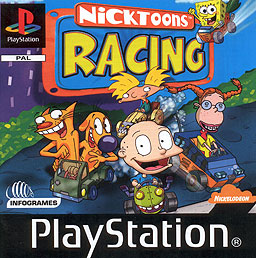
Nicktoons Racing is a Nickelodeon crossover racing video game. The game was first developed by Pipe Dream and released for the Game Boy Color, while versions for different platforms were released in subsequent years. Most versions were developed by Software Creations with the exception of the Game Boy Advance version, which was developed by Crawfish Interactive, and the arcade version, which was developed by Chicago Gaming.
Prince of Persia is a video game franchise created by Jordan Mechner. It is centered around a series of action-adventure games focused on various incarnations of the eponymous Prince, set in ancient and medieval Persia.

Tarzan is a 1999 platform game based on the 1999 film of the same name. Versions were released in North America for the Game Boy Color on June 28, 1999, PlayStation and Microsoft Windows on June 30, 1999, and Nintendo 64 in February 15, 2000. In 2012, the PlayStation version was made available on the PlayStation Store for PlayStation Vita.

Where in Time Is Carmen Sandiego? is a multiplatform video game where players have to travel through time to collect clues and the warrants necessary to capture Carmen Sandiego or her henchmen. The goal of this game is to track Carmen's villains through history and arrest them and ultimately arrest Carmen herself.
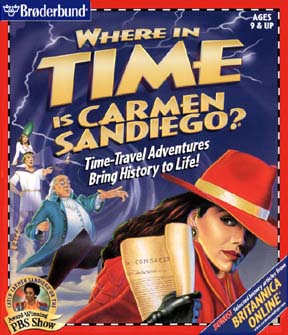
Carmen Sandiego's Great Chase Through Time is a 1997 edutainment point-and-click adventure game developed by Broderbund for Microsoft Windows and Macintosh devices. The game is a remake of the 1989 time-travel title Where in Time Is Carmen Sandiego?, making it the second Time video game in the Carmen Sandiego franchise. The game was strongly influenced by the short-lived PBS game show, Where in Time Is Carmen Sandiego?. The game was previewed at the 1997 Toy Fair in New York City. A demo version was included on the CD for Carmen Sandiego Word Detective and was available on the Carmen Sandiego website. After Broderbund was sold to The Learning Company, the game was re-released with the new title - Carmen Sandiego's Great Chase Through Time - but with minimal redesign.

Where in the World Is Carmen Sandiego? is a 1996 video game part of the Carmen Sandiego franchise. It was the third version of the game, after the 1985 original title of the same name and a 1992 Deluxe version of said game. The game's release coincided on the heels of the end of the PBS game show, and features QuickTime videos of Lynne Thigpen reprising her role as "The Chief". This was the last version of the game to follow the "classic" formula of the series, but much of the game, especially the "warrant" portion, was heavily redesigned. The Deluxe Edition released in 1998 added speech welcoming the player to each country and an "ACME Global Language Link-Up" satellite which quizzed the user on the local language. Players also received a spy watch and "an introduction to 12 foreign languages".
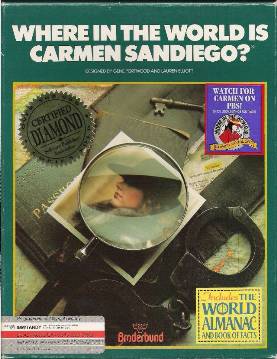
Where in the World is Carmen Sandiego? is an educational video game released by Broderbund on April 23, 1985. It is the first product in the Carmen Sandiego franchise. The game was distributed with The World Almanac and Book of Facts, published by Pharos Books. An enhanced version of the game was released in 1989, which did not have the almanac-based copy protection and instead used disk-based copy protection. A deluxe version was released in 1992, and featured additional animation and a reworked interface from the original version. Some of the bonus features included digitized photos from National Geographic, over 3200 clues, music from the Smithsonian/Folkways Recordings, 20 villains, 60 countries, and 16 maps. CD-ROM versions for DOS and Macintosh were released in 1992, and a Windows version was released in 1994.
Greg Johnson is an American video game designer who has worked for Binary Systems and Electronic Arts, was co-founder with Mark Voorsanger of ToeJam & Earl Productions Inc., and in 2006 founded his own company, HumaNature Studios. He is known for the iconic ToeJam & Earl series (1991–present), and his design credits additionally include Starflight (1986), Game of the Year Starflight 2: Trade Routes of the Cloud Nebula (1989), the multi-award-winning Orly's Draw-A-Story (1997), Kung Fu Panda World (2010), and Doki-Doki Universe (2013), Back in the Groove (2019),

















